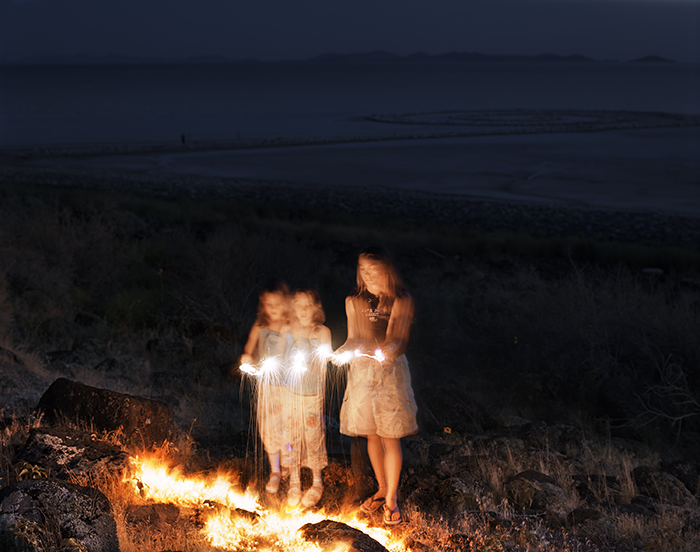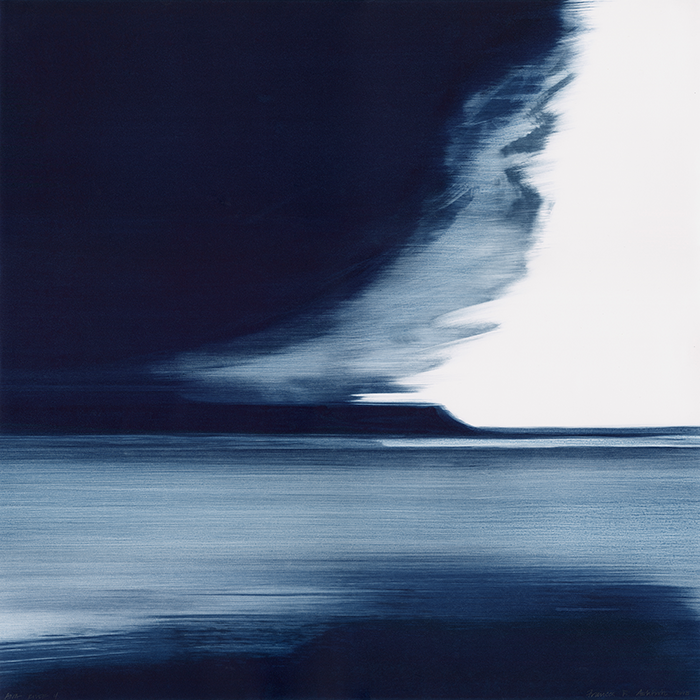Mirage | Artist Spotlight

On display at BAM through February 14, 2021
ABOUT THE EXHIBITION | The Great Basin is a vast expanse of land covering much of the American West, defined geographically by the fact that it is a closed system, its rivers draining internally rather than to the sea. Its boundaries include parts of Oregon, Idaho, Utah, Wyoming and California, and nearly all of Nevada. Its scale allows individuals, corporations, and government agencies to do things they can’t do elsewhere, from creating monumental artworks on the land to extracting natural resources or installing enormous wind farms, from testing weapons to experimenting with technology. It is a place that has long inspired artists drawn to its paradoxes. This exhibition uses the idea of a closed watershed system as a metaphor for thinking about this unique landscape as a source of regenerative power. Each of the eight participating artists presents work that considers the Great Basin from different points of view.
Organized by: Sun Valley Museum of Art
ARTIST SPOTLIGHT
Hear from the Artist
Laura McPhee talks about the Desert Chronicle project and her connection to the Great Basin.
Artist Website: lauramcphee.com

For a number of years, photographer Laura McPhee has been working on Desert Chronicle, a project inspired by her great-grandmother’s work as an itinerant schoolteacher in Nevada, traveling with her two daughters from town to town to educate the children of miners and ranchers. Desert Chronicle also draws on McPhee’s husband’s ancestors, who settled in Nevada’s Ruby Valley in the 1870s. Tracing these two separate but overlapping histories, McPhee has traveled through the deserts and mountains of the Great Basin, making photographs informed by her personal connection to its landscapes as well as larger issues around the environment and land use.
These photographs approach the history of the Great Basin on both geologic and human scale. From images of the detritus left behind in abandoned towns to photographs of the infrastructure of contemporary gold mines and solar installations, McPhee’s work considers the human relationship to the landscape of the Great Basin as a place of reinvention, exploitation and renewal. Some photographs are the result of intensely close observation; others convey the basin’s vastness— vastness that sometimes obscures both the ecological and human activity these spaces contain, despite the fact that so much of that activity exists on the land’s surface.
Laura McPhee’s photographs are currently included in the traveling exhibition Ansel Adams In Our Time, curated by Museum of Fine Arts, Boston, which will be on display at the Portland Art Museum beginning January 30, 2021. In this video clip, McPhee talks about her photographs from the Guardians of Solitude series, which were selected for this exhibition due to their strong thematic and visual connection to the work of Ansel Adams.
IMAGES (top-bottom): Laura McPhee, Hycroft Gold Mine, Black Rock Desert, Nevada, 2012, archival pigment prints, 3 panels, 30″ x 40″ each. | Laura McPhee, Sparklers, Spiral Jetty, Gunnison Bay, Great Salt Lake, Box Elder County, Utah, 2004, 50″ x 60″. Images courtesy of the artist and Gail Severn Gallery, Ketchum, ID
[+] click image to view larger
Andrea Zittel, Prototype For Billboard at A-Z West: Body in Space with Object #1, 2011, AC Plywood, Polyurethane, matte acrylic paint, 48 x 96 inches, © Andrea Zittel, Courtesy Regen Projects, Los Angeles
Videos from Art21
Born and raised on the outskirts of San Diego, Andrea Zittel grew up in a place that felt rural when she was a child but suburban by the time she left for college. As a young artist, she moved east, living in New York for a decade before returning to her home state in 1998. Zittel found herself drawn to the open spaces and desert landscapes near Joshua Tree, in the Great Basin’s southwest corner.
After she arrived, Zittel began acquiring parcels of land that became home to A–Z West, an artwork located on more than 70 acres adjacent to Joshua Tree National Park. Zittel describes A–Z West as “an evolving testing grounds for living—a place in which spaces, objects, and acts of living all intertwine into a single ongoing investigation into what it means to exist and participate in our culture today.” Among other elements, A–Z West incorporates Zittel’s home and studio, the Wagon Station Encampment (units for living and sleeping that Zittel designed for visitors), cabins, and a ten-acre parcel for High Desert Test Sites, a place for annual collaborative experimental projects.
Like land artists in the 1970s, Zittel has chosen to work on a site that allows for creative practice at a scale that would be difficult to achieve elsewhere. While much of her focus is on the practice of daily life, she also investigates land use within the deserts of the Southwest, from the history of homesteading to the expansion of cities and suburbs. She’s particularly interested in the U.S. military’s relationship to the region. This exhibition includes Wall Sprawl #4, wallpaper Zittel has designed using satellite imagery of sites that exist at the intersection of wilderness and development. Wall Sprawl #4 was made from a satellite image of Las Vegas, next to Nellis Air Force Base, using tiling and mirroring to “get at that idea of an infinite sprawl.”
The exhibition also includes Prototype for Billboard at A–Z West: Body in Space with Object #1 (2011). Zittel has long been interested in the idea of vertical planes as transmitters of ideas and ideology. Drawing on the visual language of advertising, she depicts herself standing in the desert at A–Z West, dressed in one of the seasonal uniforms she’s known for wearing. The painting illuminates the integral role of place in Zittel’s practice.
Frances Ashforth, Ana River 4, 2018, Akua and Charbonel ink on Arches 88, 30″ x 30″, courtesy of the artist
Frances Ashforth’s luminous monotypes are an expression of her lifelong fascination with water, a fascination she sees mirrored in the science writer Loren Eisley’s comment in The Immense Journey, “If there is magic on this planet, it is contained in water.” Her works marry her belief in that magic with her interest in the science of water and conservation. Mirage includes monotypes made from her memories of time spent in two distinct parts of the northern Great Basin: the Ana River, in Oregon, and the Bear River, in Utah.
Just seven miles long, the Ana River empties into Summer Lake, supporting migratory birds and other animals as it flows south through a series of canyons. Ashforth has been a resident at Playa at Summer Lake twice, working alongside writers and scientists and learning about the unique geology and hydrology of the river and lake, which, despite its name, is usually dry lakebed in the summer. The prints she made in response to her time at Playa convey the drama of the landscape and its water cycles, including enormous storm clouds that hover above the lake for days at a time.
Originally a tributary of the Snake River, the Bear River was cut off by lava flows and diverted back into what was once Lake Bonneville. Today, the lower ten miles are preserved as the Bear River Migratory Bird Refuge. The shimmering images Ashforth made after spending time along the Bear River and on multiple visits to Antelope Island capture the mirage-like visual experience of the watery landscapes of the Great Salt Lake, in which the lines between water, air and land are difficult to discern.




